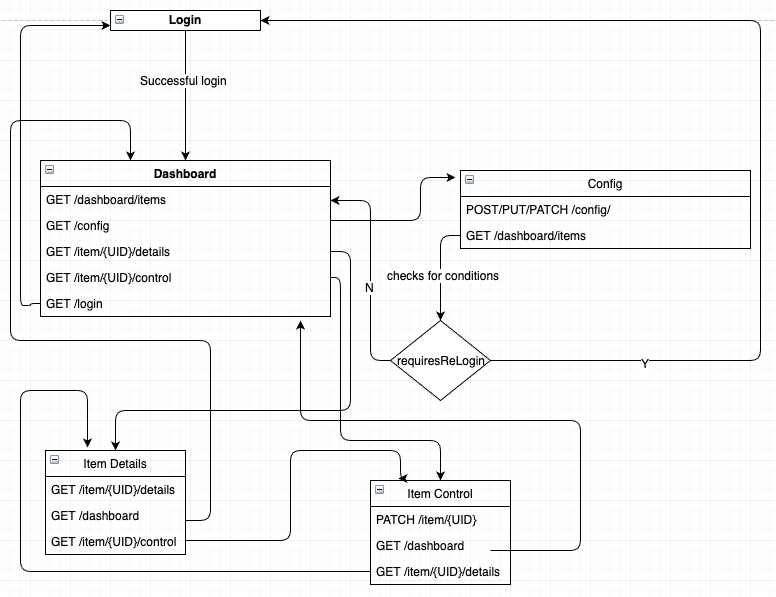- python 3.8
- pipenv
Install dependencies:
pipenv install
Run mocked server backend with:
pipenv run python app.py
Use either postman or curl or any other method to do calls against the server.
pipenv run pytest -s
Note: Tests don't do proper cleanup. Whenever they need rerunning, the server should also be restarted. This is usually avoided in containerized environments.
GET:
/login
/dashboard
/config
/items/{id}/details
/items/{id}/control
Returns a randomized "token" every time the correct password is used. The token should then be used in all other calls, or the response will be 401.
POST /login
body:
{
username: string,
password: string
}
All of these are done under the dashboard view:
GET /items
GET /items?page=1
GET /items?page=1&pageSize=50
GET /items?page=1&pageSize=50&sortBy=date
GET /items?page=1&pageSize=50&sortBy=date&sortOrder=asc&filterField=state&filterValue=running
Modification done using PUT. Missing allowed_items overwriting. Missing redirects.
POST/PUT/PATCH /config
{username: xxx,
password: yyy,
allowed_items: []
}
All other view/state change requests besides /dashboard will redirect to either dashboard or login (if user settings changed).
Changes state on GET. No redirects, this should be done by frontend.
GET /items/{id}/details
returns:
{
id: int,
state: string (running/paused/stopped)
}
Basic item control. Changes state only when a modification was made.
PUT /items/{id}
{state: string}
